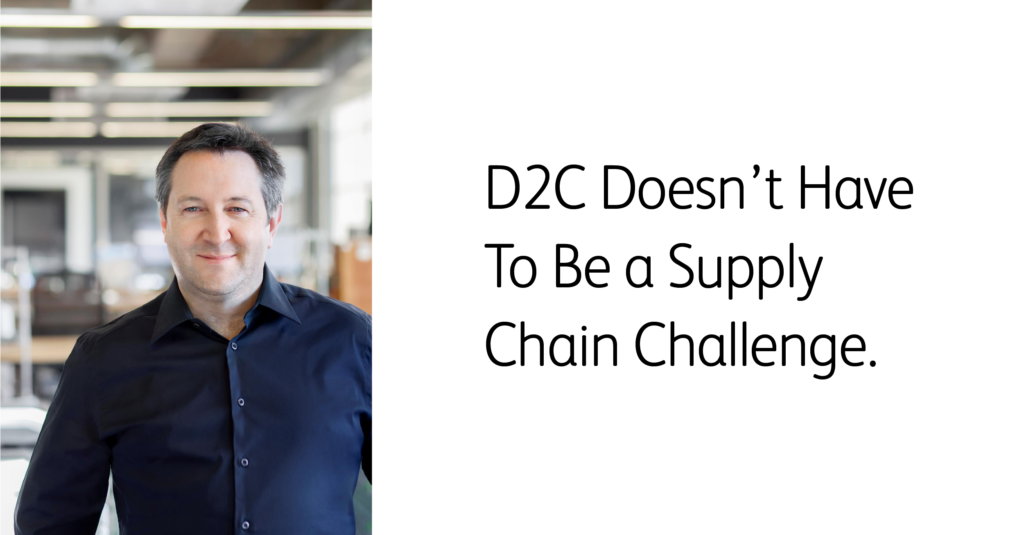May 4, 2021
D2C Doesn’t Have To Be A Supply Chain Challenge

The pandemic disrupted brick-and-mortar retail, leaving many brands scrambling to launch direct-to-consumer (D2C) channels. As consumers turned to online retail, e-commerce surged. This sea change in consumer behavior gives brands the opportunity to forge a direct relationship with their customers and radically improve their operations. When physical and digital flows are optimized, brands will enjoy higher margins, more predictable cash flow, lower operational costs, and reduced inventory.
To stimulate sales, brands must be customer-centric and offer frequent and unique products, as well as tailored experiences. Fresh inventory and unique products are key to keeping consumers engaged. Data is essential to this model, not only to enhance the consumer experience, but also enable efficient operations. To achieve these benefits, the supply chain must be flexible and resilient, reacting quickly and dynamically to market changes.
Real Demand vs. Forecast Demand
The old supply chain model that produced based on forecast-demand and delivered large single orders to regional distribution centers and large-box retailers, led to inventory multiplication. This tied up valuable capital, caused waste, and restricted brands from adapting quickly to market changes. An “asset-light” supply chain model – that is not encumbered by fixed assets – serves brands by responding to real consumer demand and delivering to people’s doorstep. When identifying a supply chain partner, the key considerations are:
- Is their supply chain flexible? Will they enable you to respond quickly and dynamically to market changes?
- Can your supply chain partner produce unique and limited edition products at scale (mass customization and personalization)?
- Are they able to deliver tailored, premium experiences that build brand loyalty?
- Can they deliver to customers anywhere in the world within 2-4 days, tracking every step?
- Will they provide robust end-to end data to improve your business operations?
- Are they committed to sustainability and transparency at every step of the product journey?
Direct-to-Consumer Brands Requires an Asset-light Supply Chain Model
Brands have a huge opportunity to make significant gains by shifting to D2C. At PCH, our asset-light supply chain model provides brands with significant benefits:
- Data is core to our operations. We provide operational visibility and controls that allow brands to adapt quickly to market disruptions, respond to consumer preferences, and track all aspects of their operations.
- The asset-light strategy is a departure from the traditional vertically integrated approach taken by many brands. While the traditional model can offer control over operation and production, it also requires large, ongoing capital investments and management time and focus.
- We invest in our ecosystem partners and suppliers to provide efficient manufacturing services. We work with more than 1,000 supply partners, and we manage the entire process, including taking title of goods, and ensuring sustainability.
- We help our customers shorten time-to-market and manage inventory efficiently – maximizing availability and reducing obsolescence thereby improving our customers’ profitability, reducing the environmental impact of overproduction and eliminating harmful materials from the supply chain.
- We are committed to sustainability at every step of the product journey and provide complete, end-to-end visibility and traceability (from the origin of raw materials, through development and manufacturing, packaging, fulfillment, and distribution).
- Our short end-to-end product development lead-times enable brands to deliver to market faster and gain greater market share.
- We have 25 years of experience working with premium brands to scale operations and deliver outstanding products and experiences, all while capturing operational data.

Liam Casey
@Liamcasey
@PCH_intl
linkedin.com/in/caseyliam